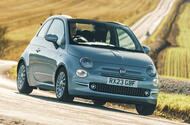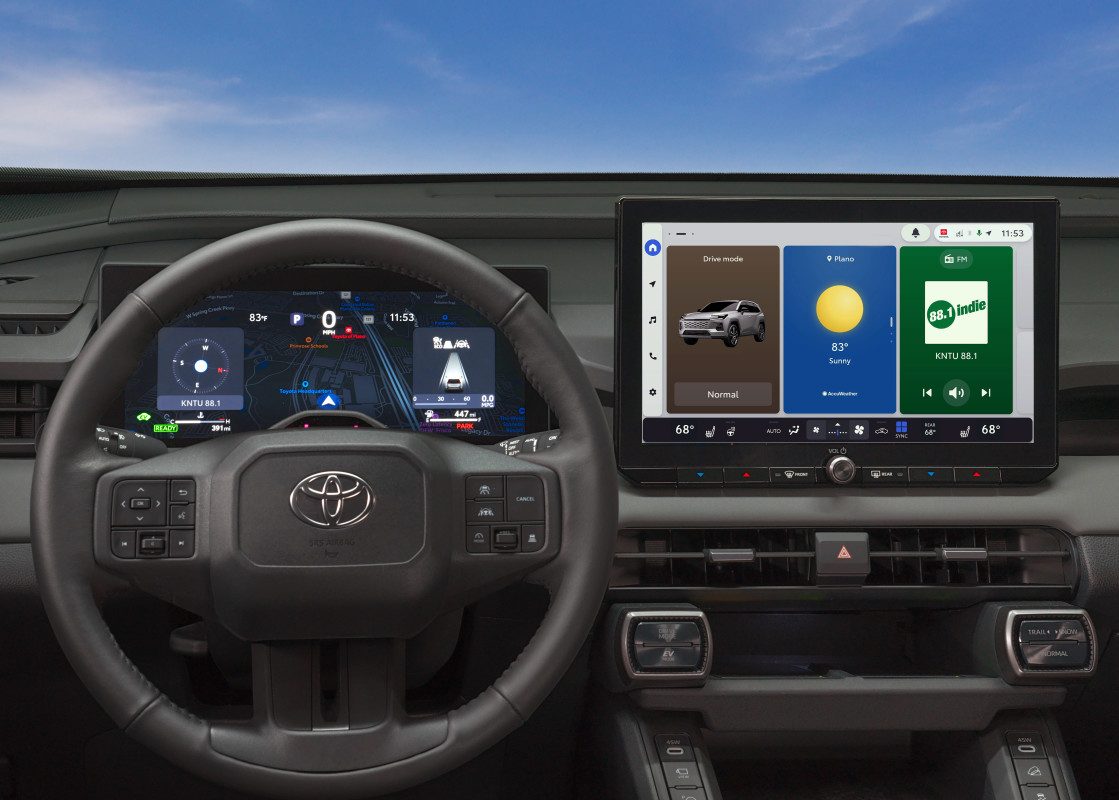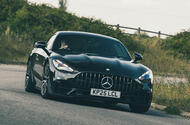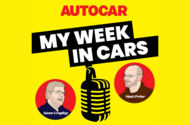The Fiat 500: A Pristine Icon or an Overhyped Relic? Debate Fuels Over Its Lasting Impact on Urban Mobility and Design Aesthetics
The Fiat 500 is more than just a car; it’s a cultural phenomenon that emerged during a critical period in Fiat’s history. In the mid-2000s, the company faced dire challenges, with waning sales and a lackluster product lineup threatening its existence. However, Fiat’s decision to revive the 500 model, originally launched in the late 1950s, was a turning point that not only salvaged the brand but also allowed it to redefine urban mobility in a modern context.
Under the direction of Luca de Meo, Fiat sought to blend nostalgia with contemporary design, engaging renowned designer Frank Stephenson, known for his work on the BMW Mini, to craft a vehicle that would capture the hearts of the public. The result was a compact car that exuded charm, provided seemingly endless customization options, and became a ubiquitous presence in city streets across Europe and beyond. Between 2008 and 2025, more than three million units of the new Fiat 500 were sold, cementing its place as a successful revival.
However, the 500’s appeal extended beyond its aesthetic and nostalgic value. The variety of color options and customization possibilities allowed consumers to express their individuality in a market often dominated by more standardized offerings. With over 549,000 combinations available, from vibrant shades to playful decals, the Fiat 500 became more than just a mode of transport; it transformed into a canvas for self-expression. This made it particularly popular among urban dwellers, who appreciated the car’s compact size and eye-catching design.
Initially, the base model, known as Pop, came equipped with essential features such as central locking, electric windows, and MP3 connectivity, making it an enticing option for budget-conscious buyers. As potential consumers progressed to the mid-spec Pop Star and top-spec Lounge, the inclusion of air conditioning, alloy wheels, and enhanced interior features further solidified the 500’s reputation as a stylish and functional urban vehicle. This multi-tiered approach to trim levels helped ensure that the Fiat 500 appealed to a wide range of customers, from young professionals to older adults looking for a compact vehicle.
While the Fiat 500 excelled in terms of design and customization, it was often criticized for lacking performance. The 1.4-liter petrol engine, with its modest output of 99bhp, struggled to deliver excitement on the road, as drivers found themselves needing to push the engine hard to achieve adequate speed. It would accelerate from 0 to 62 mph in a respectable 10.3 seconds, but this was not enough to instill a sense of urgency when navigating heavy traffic or merging onto faster roads.
Potential buyers were faced with the choice of a manual or an automated manual gearbox, the latter of which was often described as clunky and unrefined. This sentiment was echoed among enthusiasts who preferred a more engaging driving experience. For drivers looking for an older model, the 1.2-liter petrol with 68bhp and the 1.3-liter diesel Multijet were attractive options, particularly given their affordability in terms of road tax and fuel efficiency. The diesel variant particularly appealed to cost-conscious drivers due to its impressive fuel economy of around 68 mpg.
However, the true standout in the Fiat 500 lineup was the two-cylinder TwinAir engine. With its quirky design and captivating sound, the TwinAir attracted a devoted following among those who appreciated its unique character. Despite being marketed for its eco-friendly benefits, the real-world fuel economy fell short of expectations, typically returning around 40 mpg, which was a significant deviation from the promised figures.
As the years passed, the Fiat 500 saw several changes and updates. Notably, in 2015, the brand introduced a facelift that improved ride quality and handling through suspension tweaks. New bumpers, headlights, and a modernized grille not only updated the vehicle’s appearance but also incorporated modern technology like the Uconnect infotainment system. These updates made the later models more appealing to savvy used car buyers seeking the most current features without breaking the bank.
Over the lifespan of the Fiat 500, almost two decades, the vehicle remained largely the same in essence, save for incremental updates. Its charm and character stood strong throughout, and its design has become emblematic of urban driving culture. While it may not have matched the exemplary ride and handling quality of competitors like the BMW Mini, it possessed its own whimsical appeal that attracted a loyal customer base.
The Fiat 500’s impact on car culture and urban mobility is substantial. In many ways, it epitomizes the shift toward smaller, more efficient vehicles as cities become increasingly congested and environmentally concerned. This shift is reminiscent of the principles underpinning modern urban design, which emphasizes walkability and public transport but recognizes the need for personal vehicle accessibility.
The 500 also challenges traditional notions of what constitutes a desirable vehicle. Despite its limited power and performance, it has achieved a status that many larger, more powerful cars might envy. This raises questions about what consumers value in a car today—whether it’s performance, aesthetics, customization, or simply a sense of identity.
In a car market often dominated by larger vehicles designed for space and practicality, the Fiat 500 serves as a reminder of the value of compactness and style. The juxtaposition of its small size against its cultural impact illustrates a desire for cars that stand out rather than blend in. The growth of the electric vehicle market, where many brands are embracing environmentally friendly designs, also positions the Fiat 500 as a precursor to modern automotive trends.
As we reflect on the years since the Fiat 500’s introduction in 2008, its significance within the automotive landscape remains unquestionable. It demonstrates how a vehicle can transcend its mechanical purpose and become a symbol of personal expression and urban lifestyle, while also prompting discussions about sustainability and the evolving nature of car culture. How future generations will perceive the Fiat 500’s legacy remains an open question, but its distinctive blend of charm, style, and historic roots ensures it will continue to spark debate and admiration in equal measure.

Fiat’s 500 is reliable, ubiquitous and available from less than £1000
Back in the mid-2000s, Fiat was on the brink of extinction as a result of dwindling sales and a model line-up that lacked any real appeal. Fiat’s boss at the time, Luca de Meo, played a masterstroke: he called on design legend Frank Stephenson, who was behind BMW’s similarly conceived Mini revival, to pen a new 500.The result? Fiat’s salvation. The 500 turned the tide for the ailing marque, which sold more than three million examples of the car between 2008 and 2025. No wonder de Meo’s went down the retro route again, when he was CEO of the Renault Group.The cheeky 500 was unique for not only its looks but also the endless customisation Fiat offered. Trawl through the classifieds and you will find examples finished in baby blue, mustard yellow and lipstick red. When it was new, Fiat said it could be specified in more than 549,000 different combinations, with liveries and decals available on top as options.Pop was the entry-level trim and came with central locking, electric windows and door mirrors, as well as MP3 connectivity. Mid-spec Pop Star added air-con but we think top-spec Lounge makes the best used buy, thanks to its alloy wheels, glass sunroof and split rear seats.It was a shame that the 500 didn’t really have the go to back up its show. The 99bhp 1.4-litre petrol (sourced from the Fiat Panda 100hp) was a little sedate and could manage only a 10.3sec sprint to 62mph. It seemed pretty content at motorway speeds, but you did have to work the engine quite hard, with peak power coming in at 6000rpm. We would have liked a little more urgency when pulling into fast-moving traffic.While you could have an automatic gearbox, the clunky SMG automated manual Fiat offered was poor, but the manual is plenty slick enough.If you are buying an older model, the 68bhp 1.2-litre petrol will appeal for its £35 annual road tax, as will the 68mpg promised by the 1.3-litre diesel Multijet.But the unusual two-cylinder Twinair brings the most character – and free road tax. It brought aural rewards too, with the thrummy engine making it more enjoyable to rev out to its 6000rpm redline. Fun to drive it may be, but we were a little disappointed by its real-world economy of around 40mpg – some way off the 68mpg promised by Fiat. More pleasing is the 55mpg you can eke out of the mild-hybrid 1.0-litre powertrain in the real world, though you will pay more for the privilege, given it wasn’t launched until 2020.The early 500 couldn’t quite match the Mini on the ride and handling front, but revisions to its suspension as part of a facelift in 2015 improved things. Alongside the tweaks to its underpinnings, the 500 gained new bumpers, headlights, taillights and a restyled front grille, which make it worth paying a little extra for a slightly newer used example – plus you get the later Uconnect infotainment screen and soft-touch cabin trim.The Twinair gained a boost in power to 104bhp and the 1.2-litre four-cylinder was tweaked to dip below 100g/km CO2 and comply with Euro 6 regulations.Nearly two decades is a long shelf life for a car, but the 500 hasn’t changed all that much during its time in production. You could even go so far as to say it’s approaching the same desirability and iconic status as the 1950s original, though you’ll be glad for the slightly more modern accoutrements on those rainy winter commutes.



